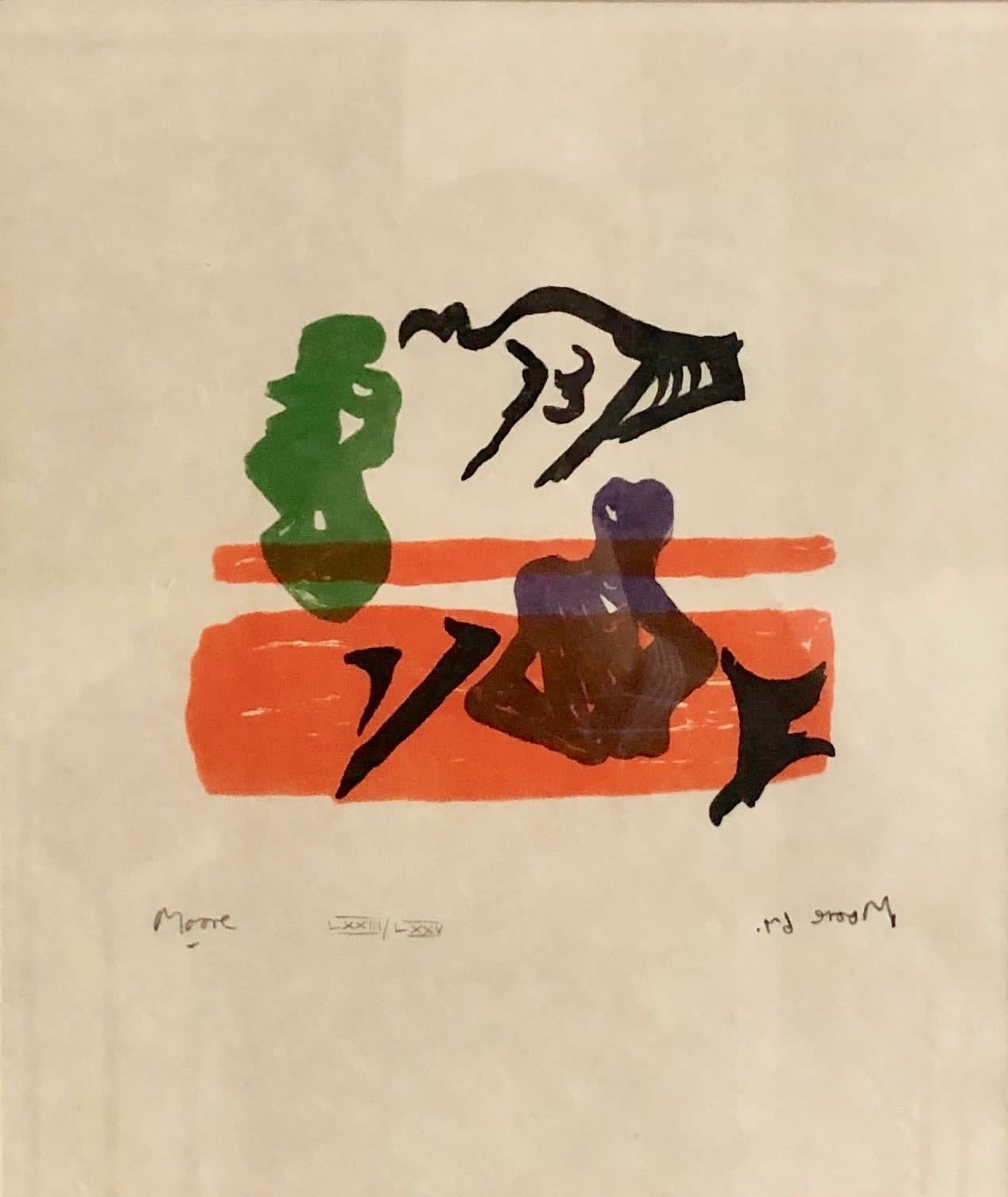-
Artworks
Henry Moore U.K., 1898-1986
Violet Torso on Orange Stripes, 1967lithograph in four colours on Japon nacré paper
Image: 16.5 x 19.7 cm
Paper: 31 x 36.8 mmCopyright The ArtistHenry Moore's 'Violet Torso on Orange Stripes' (1967) is a lithograph in four colours on Japon nacré paper that exemplifies his enduring fascination with the human form and organic shapes....Henry Moore's "Violet Torso on Orange Stripes" (1967) is a lithograph in four colours on Japon nacré paper that exemplifies his enduring fascination with the human form and organic shapes. The work demonstrates Moore's characteristic style of blending abstraction with figuration, reflecting his belief that good art contains abstract and surrealist elements.
The piece emerged during Moore's international acclaim in the 1960s, when he was at the height of his artistic powers. The lithograph showcases his ability to translate his sculptural vision into a two-dimensional form. The violet torso floats against geometric orange stripes, creating a dynamic interplay between form and colour.
Moore's artistic influence was profound in post-war Britain, where he became a symbol of cultural renewal and optimism. His unique approach to the human figure as a metaphor for landscape and his exploration of organic forms revolutionised modern British sculpture. His work was characterised by curvilinear and biomorphic forms that conveyed vitality and movement, challenging traditional notions of figurative art.
By 1967, Moore had established himself as Britain's most internationally renowned sculptor. He represented a moderate modernism that bridged traditional and avant-garde approaches. His influence extended beyond sculpture, inspiring a generation of artists and helping establish Britain's reputation in contemporary art.Literature
Catalogue Number: CGM 862of 2
Join our mailing list
* denotes required fields
We will process the personal data you have supplied to communicate with you in accordance with our Privacy Policy. You can unsubscribe or change your preferences at any time by clicking the link in our emails.
